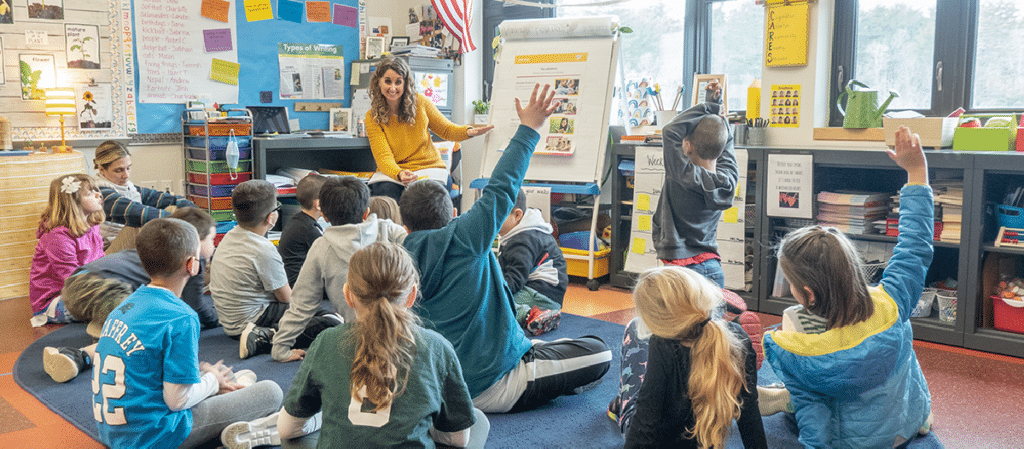There is such a sense of potential that comes with the freshly sharpened pencils, organized supplies, and stacks of books waiting to be handed out at the start of a new school year. But the strongest feeling of possibility by far comes from your list of new students. The best way to support this new classroom community is by laying the foundation for a productive and developmentally appropriate classroom environment at the start of the year. Make a plan to lay that foundation by following these five Cs on the first day of school:
- Chime. Introduce students to one of my favorite Responsive Classroom tools, the Zenergy Chime. Using a visual (such as a raised hand) and audible signal for quiet attention from the very first day of school sets a clear expectation for the classroom.
- Connect. Focus on activities that allow you and your students to connect with one another and build a positive classroom community. For example, when you introduce students to the classroom library, give them the opportunity to share what types of books they like; this not only builds connections between students, it also creates interest in academics. For other ways you can build a positive classroom community early in the school year, check out Building an Academic Community.
- Consider. Consider who your students are, on a variety of levels. Developmentally responsive teaching starts with looking at the data you have before the students even walk in the door, such as birthdays (try out the Birthday Cluster Exercise), and then being open to learning and adjusting your understanding of their developmental stages.
- Create. Cocreate the rules and expectations of your classroom environment with your students. Ask for their input in how the classroom is set up or organized, and work together to create classroom agreements for behavior. Taking this step will set up your classroom to be a calm and orderly learning environment that promotes academic autonomy—a defining characteristic of the Responsive Classroom domain of effective management.
- Cultivate. Right from the start, cultivate engaging academics. Reminding students that they are mathematicians, scientists, authors, and artists as they explore their materials will give them a sense of purpose and agency. Understanding their interests will allow you to connect and keep learning relevant to your students.
Factor in Development
While these five Cs are universally applicable, they will look different for each developmental stage. For instance:
- Kindergarteners need more visual markers of time and schedule (think hourglass and colors) in cocreating.
- First and second graders have a robust sense of discovery for the natural world that can be used to cultivate engaging academics.
- Third and fourth graders can engage in more complex connecting activities and can connect to places and people beyond the classroom.
- Fifth and sixth graders are ready to take on leadership roles including managing the chime.
- Seventh and eighth graders can engage in an entire unit on their developing identity, which will give you much to consider in the wonderful year ahead!
For more thoughts on preparing for the first day of school, check out The First Six Weeks of School, which also offers ideas for planning the days and weeks following the opening day, and Yardsticks, which can help make these strategies developmentally responsive.
Kate Conway is the leadership curriculum and instructional designer for Responsive Classroom.
